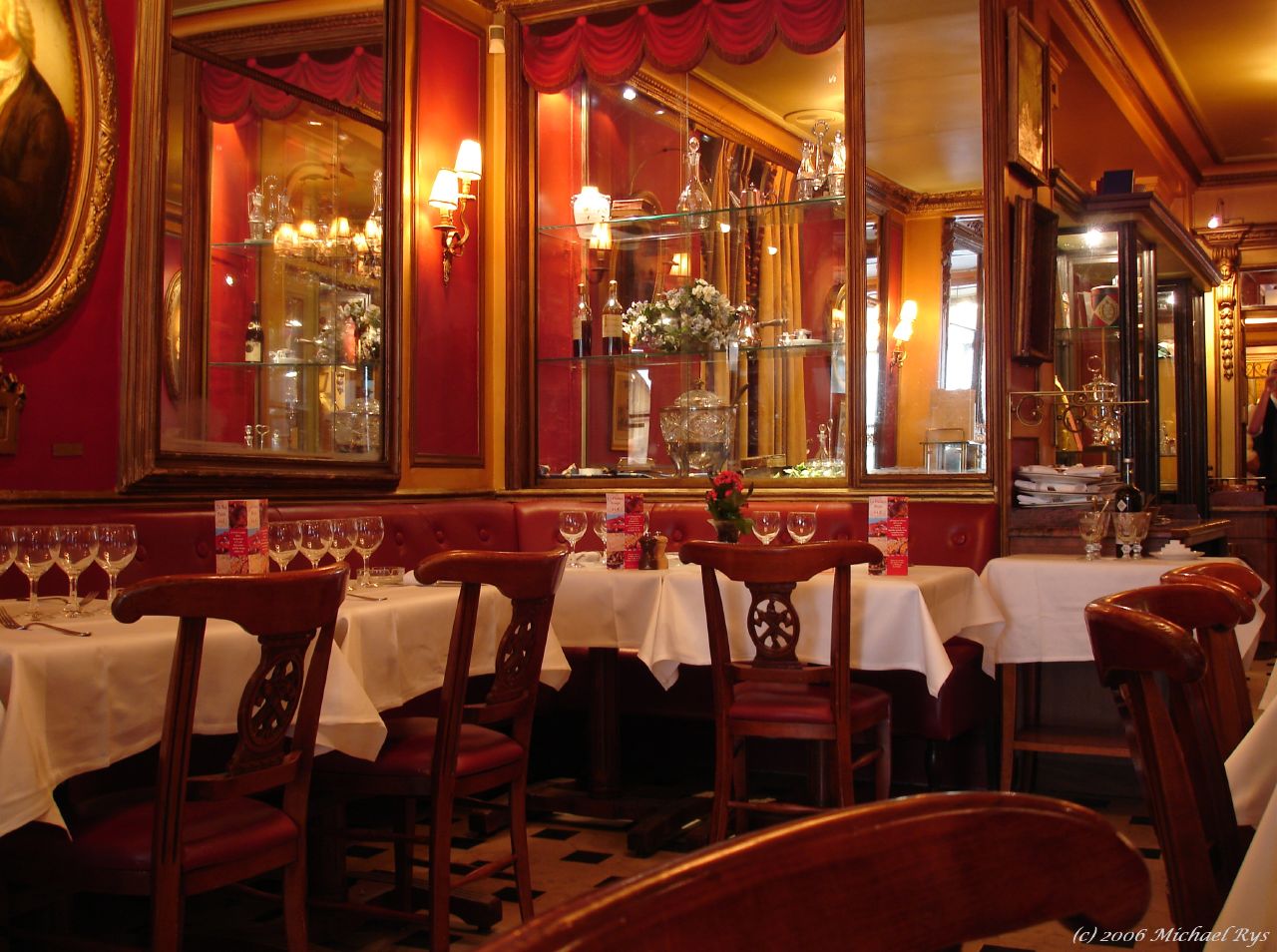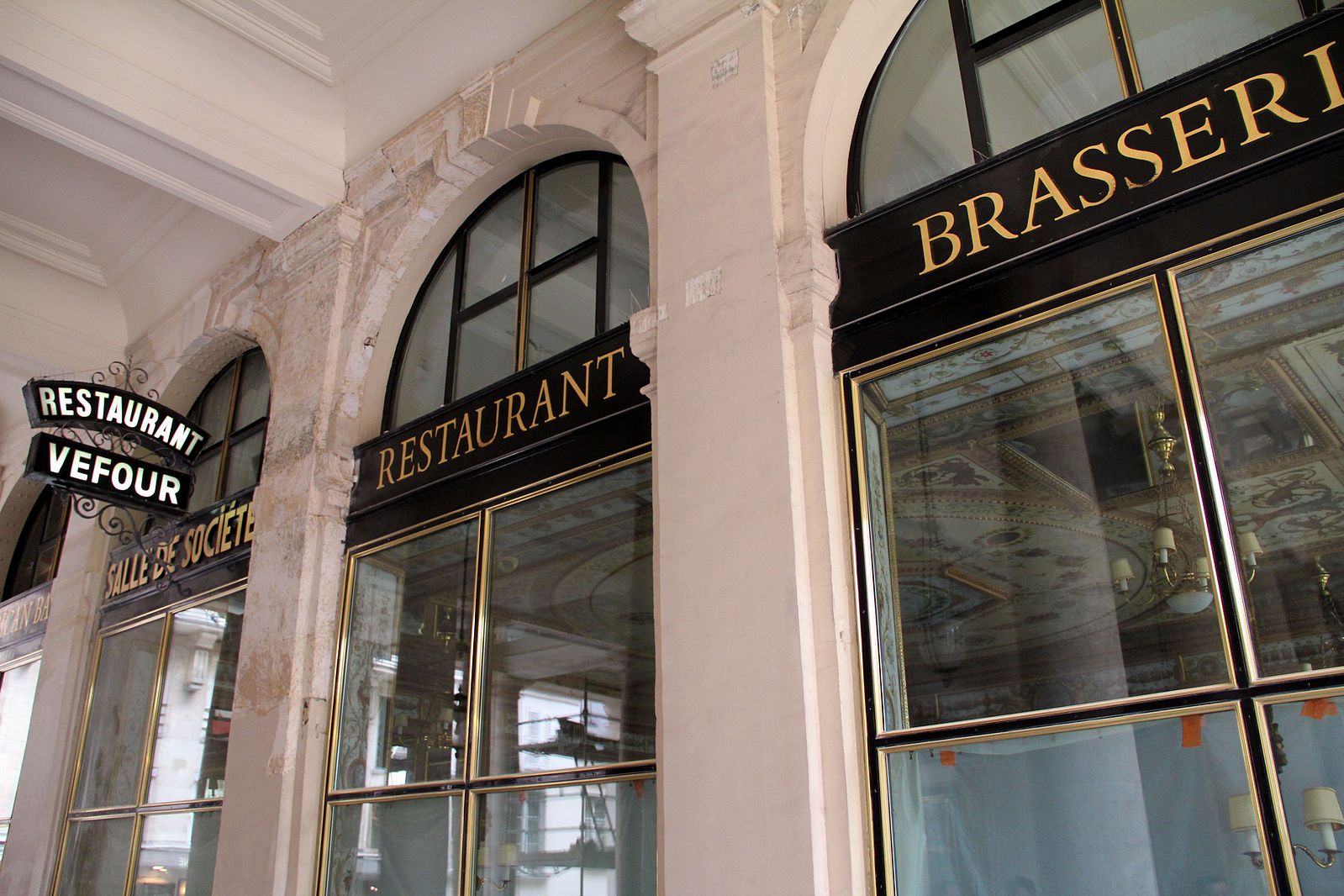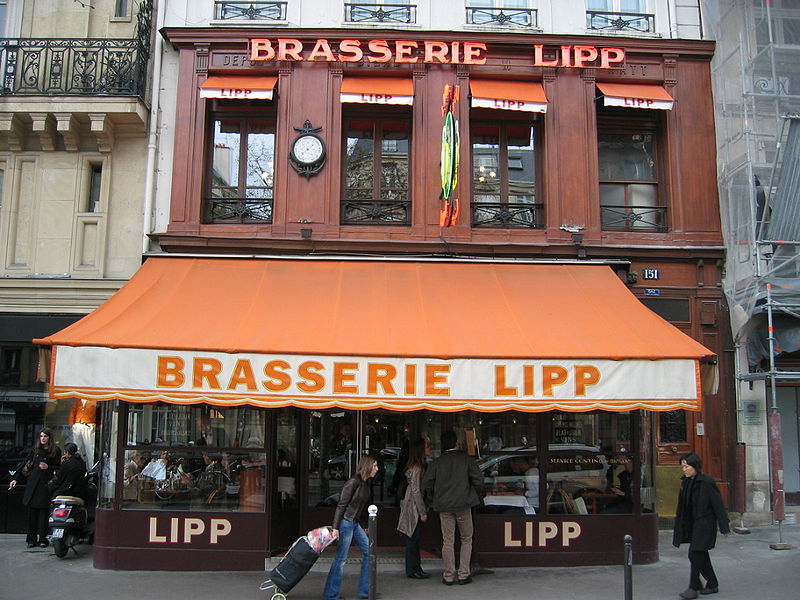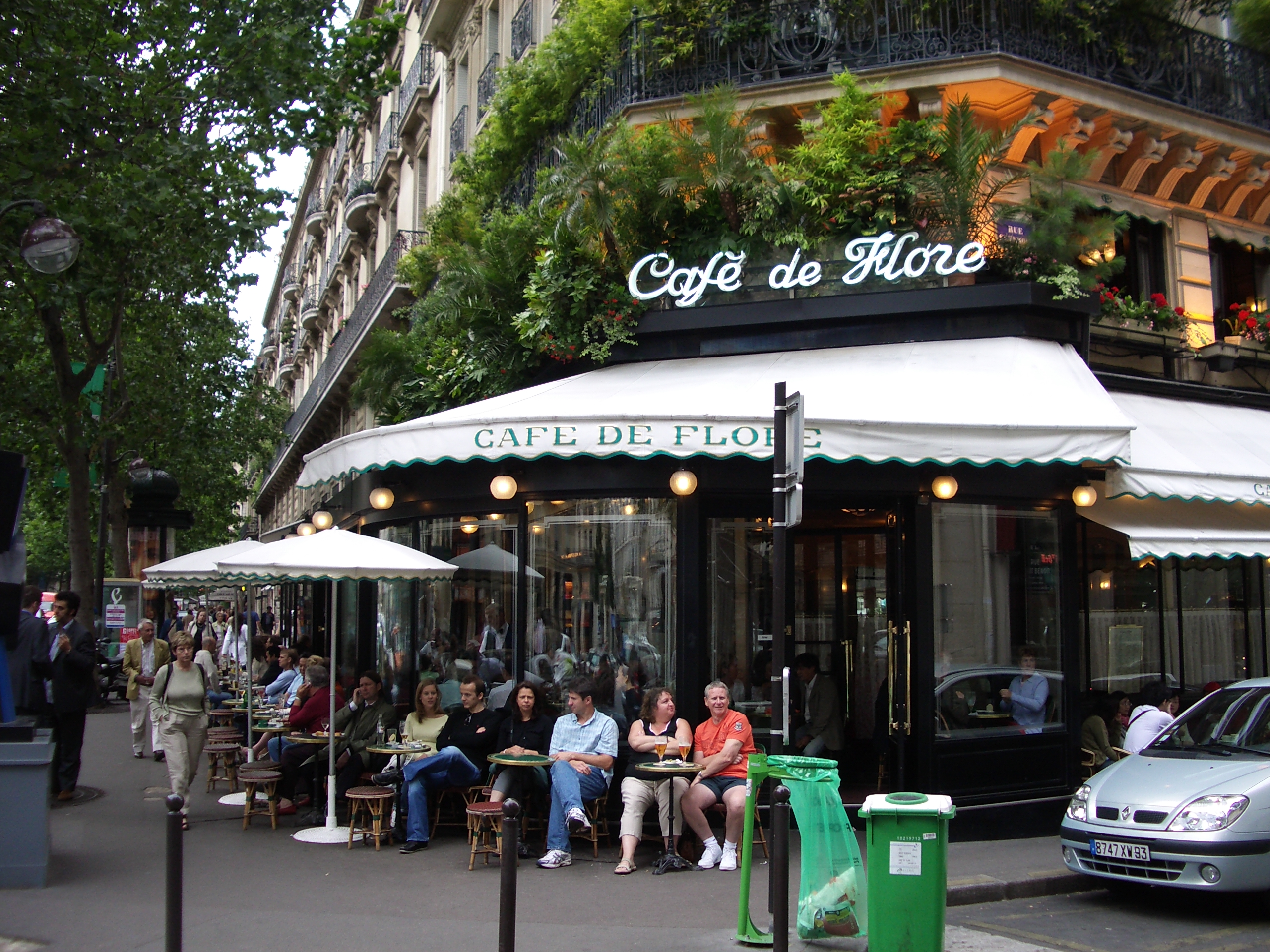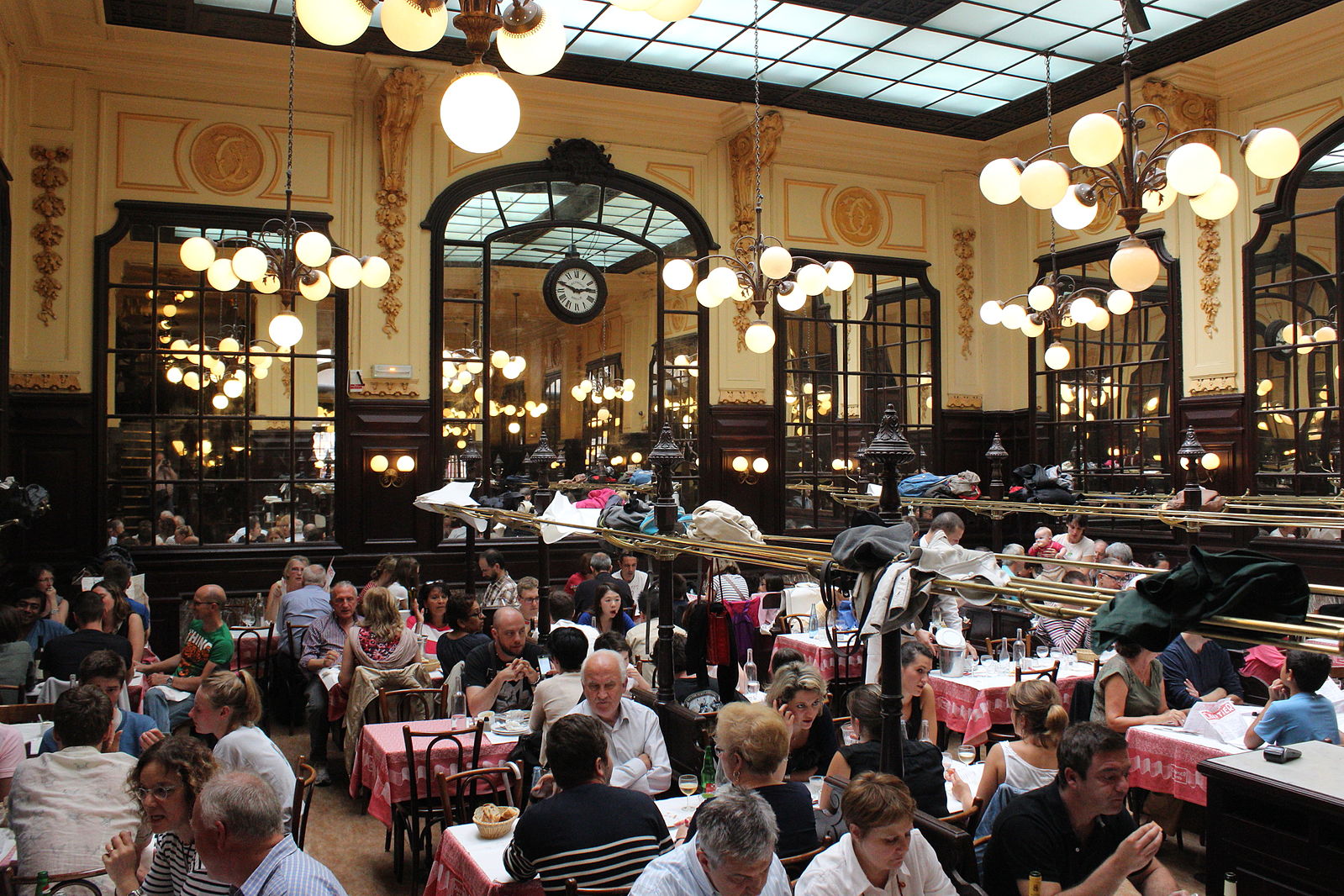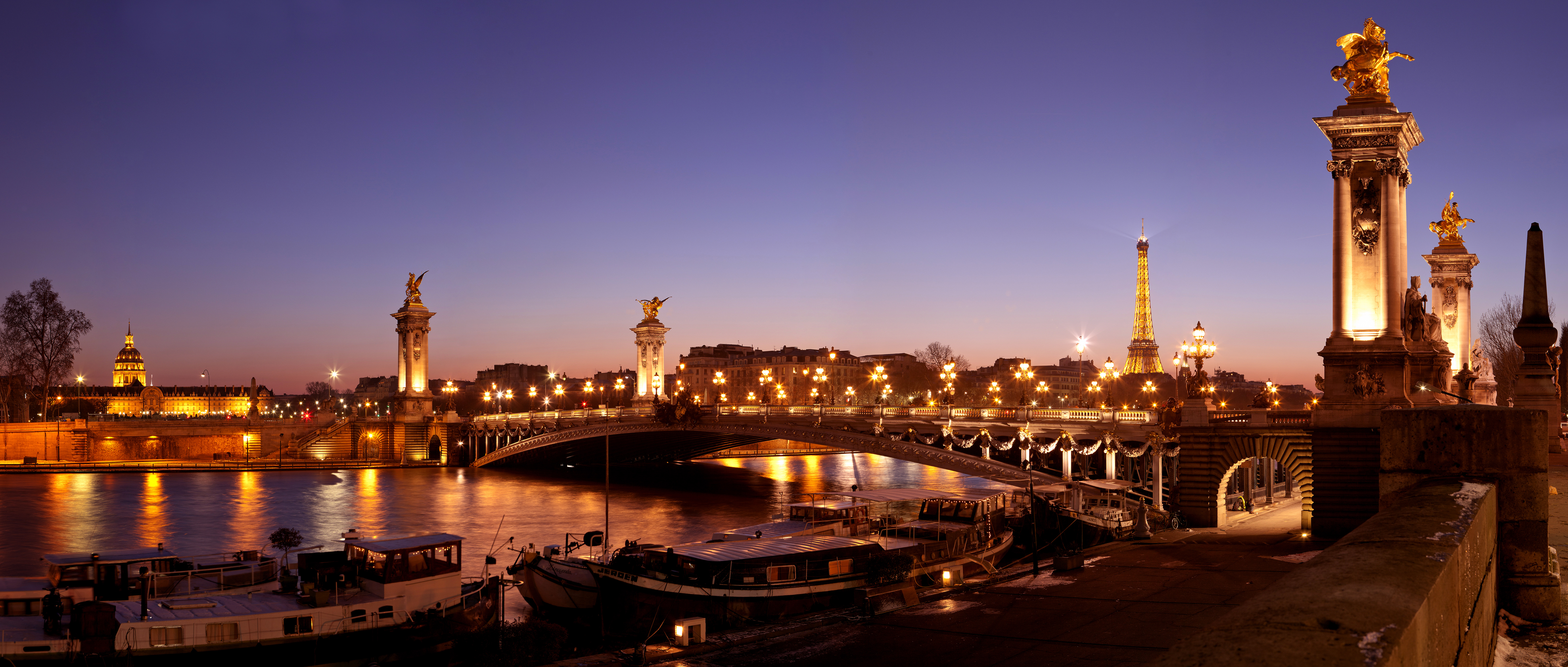Midnight in Paris: The Food Edition
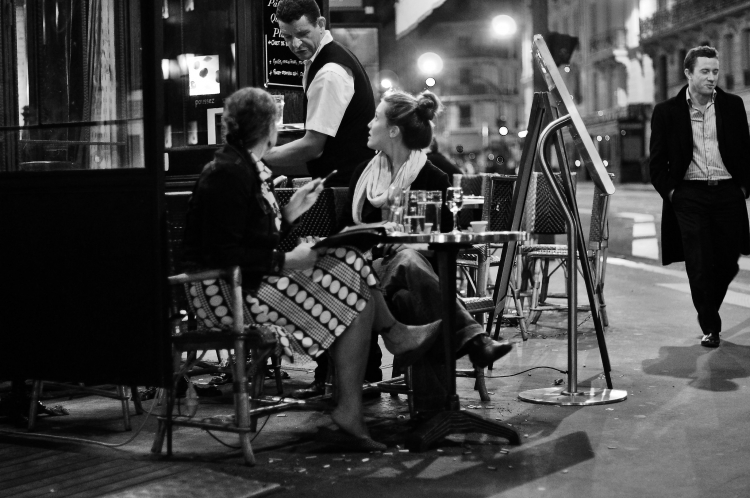
Paris is a magical and historical city that, despite having gone through war various times, has managed to keep many of its beautiful buildings. Politicians, writers, artists, musicians, and actors from across the world, have come together in the City of Lights to enjoy the fine wines, good food, each other's company, and especially Paris' unique charm. Many of the restaurants they frequented are still open and still noteworthy. A lot of these restaurants serve traditional French food! Altogether, the intertwining aspects of these restaurants create the essential Parisian dining experience.
Image credit: Michael Rys
First is Le Procope. Francesco Procopio dei Coltelli of Palermo first opened this café in 1686. It is now known as the oldest restaurant in Paris, situated on what used to be known as rue des Fossés Saint-Germain. A few of its regulars included Jean-Jacques Rousseau, Victor Hugo, Jean de la Fontaine, Honoré de Balzac, and Paul Verlaine. In the late 1980s, it was refurbished with dark wooden chairs, yellow and red walls, oval paintings of famous philosophers and writers, crystal chandeliers and busts of famous politicians. Interestingly enough, the universally recognised symbol of Liberty, the Phrygian cap, was first displayed at Le Procope. The restaurant serves fresh seafood, choucroute garnie (a French dressed sauerkraut), and other meaty dishes that are all fantastically paired with robust French wine.
Image credit: Wikimedia Commons/Oderik
Le Grand Véfour is the most extravagant on this list. Originally established in 1784 as the Café de Chartres in the arcades of the Palais-Royal, what is now known as Le Grand Véfour is sumptuously rich in decoration and is known for its gastronomical cuisine. Their website describes the café as, "The jewel of the 18th century 'art décoratif,'" and "the finest gourmet rendez-vous of the Parisian political, artistic and literary society for more than 200 years." The chef is Guy Martin, who prepares colorful plates of traditional French food with a refreshingly modern twist. Be warned! A dish averages 100 euros, and desserts start at around 30 euros. If you can afford it, it would be impossible to ever tire of the Café de Chartres, as its menu changes seasonally.
Image credit: Creative Commons
Brasserie Lipp on boulevard Saint-Germain opened in 1880. Léonard Lipp moved to Paris after Alsace, where he was originally from, became part of Germany. Brasserie Lipp is a relatively large brasserie that Hemingway loved to eat at—he often ordered a liter of beer and pommes à l'huile with sausages. Sausages and beer were this brasserie's specialties, and with modest prices, the brasserie quickly grew popular. Marcellin Cazes redesigned the café in 1920, adding ceramic murals by Léon Fargue and ceilings painted by Charly Garrey, accompanied by seats made of brown moleskine.
Image credit: Flickr/Sergeymk
Right across the road from Brasserie Lipp is probably the most commonly known establishment on this list: Café de Flore. It opened in 1887 and even has a literary prize named after it, the Prix de Flore, which is given annually at the cafe. Today, it has become more of a café in the American sense, as it mostly serves beverages such as coffee, Mariage Frères tea, breakfast, and snacks. The venue is sweet and simple, and as the name suggests, seems to present a floral theme. It exudes a magnificent and enchanting charm, so it's no wonder that celebrated authors from all around the world loved to sit here, looking onto the street, and people watch, read or write. The world-renowned café now even has a movie named after it. Today, this place is a hot spot to bump into celebrities too—last time I was there, I saw Mika!
Image credit: Wikimedia Commons
Last, but certainly not least, comes Le Bouillon Chartier, which is actually the most affordable on this list, and perhaps the most unique experience of them all. Chartier opened its doors in 1896. Their website explains that, "the menu is a long one, the meals are authentic and the mains are around 10 euros. You can expect to enjoy the traditional leeks vinaigrette, hard-boiled eggs with mayonnaise, vegetable soup or snails for starters; meat, fish or stews simmered to perfection [...] next". The establishment is composed of one large communal dining hall, so do not expect much privacy here. You can also find relatively cheap pitchers of wine!
Image credit: Wikimedia Commons/Dimitri Destugues
There is a remarkable and unusual feeling sitting in the same exact brasserie that illustrious people such as Oscar Wilde, Pablo Picasso or Benjamin Franklin sat in many years ago—a feeling that is a bit difficult to put into words, but very easily felt. And with that, I strongly recommend trying at least one for the sake of the experience. There are so many restaurants to choose from in Paris, and it is sometimes difficult to pick considering French food does not tend to differ much, so rather than selecting one at random on a casual stroll, why not test one of these out? No average Parisian café could beat this kind of experience.

